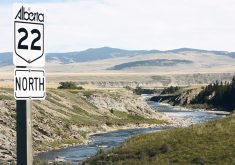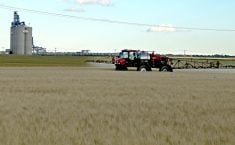The make-up of Saskatchewan’s legislature looks different in some respects after the Oct. 26 election but in other ways it is much the same.
The Saskatchewan Party, with Scott Moe in his first campaign as premier, won its fourth consecutive mandate, taking 48 seats to the New Democratic Party’s 13. That left the parties with the same numbers of seats they held before last fall’s federal election when two Sask. Party MLAs left to run federally. Those seats remained vacant until this vote.
Rural Saskatchewan held steady with all 29 seats returning their Sask. Party candidates.
Read Also

New coal mine proposal met with old concerns
A smaller version of the previously rejected Grassy Mountain coal mine project in Crowsnest Pass is back on the table, and the Livingstone Landowners Group continues to voice concerns about the environmental risks.
That includes newcomers Dana Skoropad in Arm River, Daryl Harrison in Cannington, Ryan Domotor in Cut Knife-Turtleford, Travis Keisig in Last Mountain-Touchwood, Terry Jenson in Martensville-Warman and Jeremy Cockrill in The Battlefords.
Agriculture minister David Marit was easily re-elected in Wood River, as was former agriculture minister Lyle Stewart in Lumsden-Morse.
Former NDP agriculture critic Yens Pedersen was defeated in Regina Northeast. In Prince Albert, one NDP seat flipped to the Sask. Party, while in Regina-University the NDP candidate, Aleana Young, defeated cabinet minister Tina Beaudry-Mellor.
In Saskatoon, the government won Saskatoon Riversdale, a long-time NDP stronghold, but gave up Saskatoon University and Saskatoon Eastview.
NDP leader Ryan Meili was re-elected in Saskatoon Meewasin. He was also running in his first campaign as leader and had to wait for mail-in ballots to be counted to declare victory.
The official vote count will be held Nov. 7.
A day after the election, Moe said the government would get right to work.
“I will be meeting with our new caucus,” he told reporters. “We’ll be putting together a new cabinet and we will be starting to plan precisely what is going to go in our speech from the throne for this fall, as well as a fall session.”
The first business is expected to enable the promised home renovation tax credit.
Saskatchewan Association of Rural Municipalities president Ray Orb said he looked forward to working with those who will “have a part to play in shaping our province and advancing the priorities of Saskatchewan’s rural municipalities.”
He reiterated that reliable broadband accessible to all residents is a key issue for government to address and that it should be considered an essential service.
Meanwhile, much of the analysis of the recent vote has turned to what the NDP, once considered the natural governing party in the province, has to do to gain support. Suggestions have included a name change or a rebranding.
The party that once dominated in rural Saskatchewan hasn’t won a rural seat since 1995.
There is also the matter of the Buffalo Party of Saskatchewan, which came a strong second in the four safe Sask. Party seats of Cannington, Estevan, Cypress Hills and Kindersley.
The party, which stands for smaller government, individual freedom and independence, garnered 2.63 percent of the popular vote while running 17 candidates. Yet it finished ahead of the more well-established Green Party of Saskatchewan, which ran 60 candidates and earned 2.27 percent.
The once mighty Progressive Conservative and Liberal parties received just 1.94 percent and .09 percent, respectively. Independent candidates earned .25 percent.
The Sask. Party came in at 61.57 percent and the NDP had 30.7 percent.
Voter turnout was 51.86 percent; mail-in ballots accounted for 9.45 percent.


















